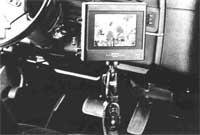European HD television
1988/02/01 Elhuyar Zientzia Iturria: Elhuyar aldizkaria
During the summer of last year we could see the first image of European HD television at the Funkaustellung in Berlin. A year after the implementation of the project that is part of the Eureka program, the prototypes of cameras and receivers that provide images of film quality have been presented.
With this Europe has given a quick response to the Japanese threat. The large Japanese television network NHK, with the help of its industry, has prepared a high-definition television system that aims to impose as a global standard to dominate the world television market. However, in June 1986, in the beautiful Yugoslav city of Dubrovnik, the meeting of the International Advisory Council for Broadcasting (INBA) overturned the Japanese proposal.
The Japanese proposed a system of 1125 lines (the current one has 625), the screen would be twice higher and work at a frequency of 60 Hz. Europeans disagreed with this and recalled that currently two-thirds of the world's TVs work at 50 Hz. In addition, a new standard aimed at satellite television broadcasting will come into force shortly and this standard has been organized in Europe with the aim of saving European investments. That is why it was decided to launch a HD television system based on this D2MAC standard. The system will work at 50 Hz, 1250 lines and in 5/3 format.
European television will be jointly developed by Thomson and Philips, market rivals to date. When will it be for sale? Designers do not dare to date, but it could be between 1990 and 92. According to the manufacturers, HD television will be distributed in rooms and projected on large screens. The receivers are excessively heavy (70-80 kg) and very clumsy to be able to place them in the houses.

Gai honi buruzko eduki gehiago
Elhuyarrek garatutako teknologia





